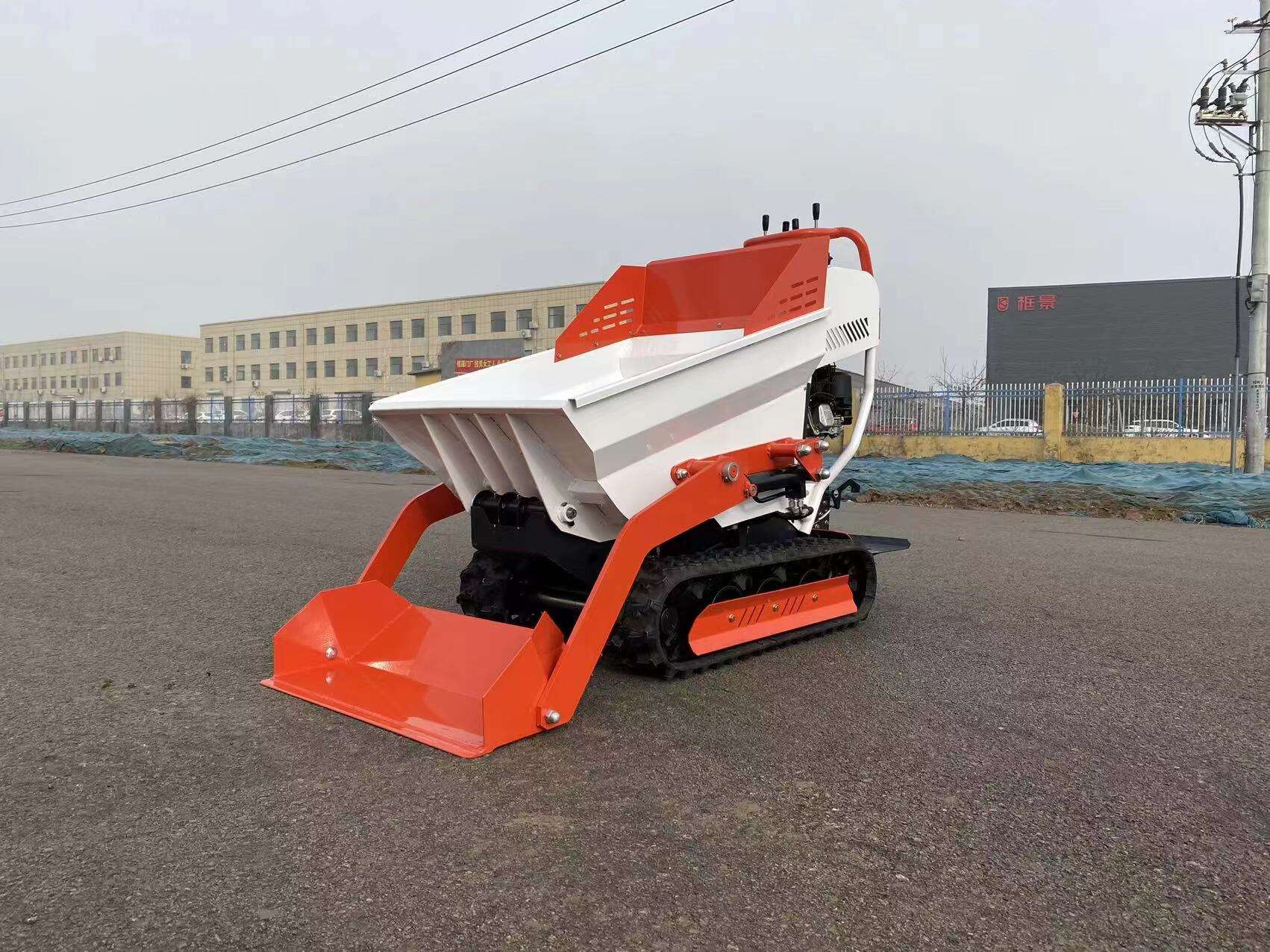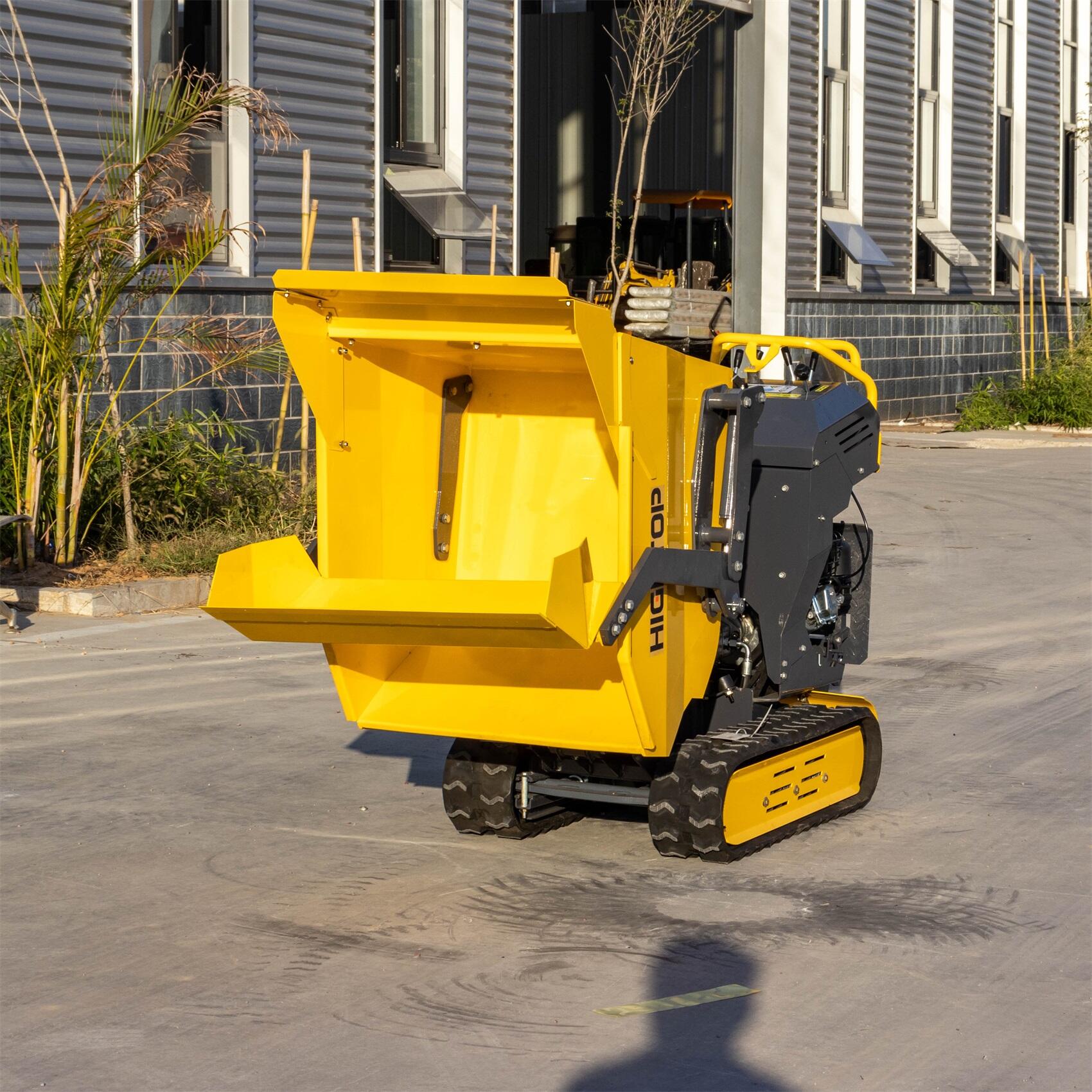Are Crawler Dumpers Revolutionizing Material Handling on Tough Terrain?
Track Design and Ground Pressure Distribution
Crawler dumpers work best on rough terrain thanks to their special track system which gives them better grip and balance when things get bumpy. Unlike regular trucks that would get stuck fast, these machines handle all sorts of challenging conditions from thick mud to rocky hillsides without breaking a sweat. What really matters here is how those wide tracks spread out the machine's weight over more ground space. This means less damage happens to the soil underneath because there's not so much pressure concentrated in one spot. That's why construction sites near wetlands or forested areas often rely on crawler dumpers instead of other equipment. The reduced environmental impact makes them ideal for projects where keeping the land intact is important for future development plans.
Getting to grips with how tracks are designed makes operations run smoother and helps handle materials better while cutting down on running costs over time. For businesses working in rough terrain environments like construction sites or mines, this knowledge matters a lot because keeping the ground stable often determines whether projects actually get completed successfully. When companies really understand what they're dealing with in terms of terrain challenges, they tend to operate more efficiently without damaging surrounding ecosystems at the same time. Look at mining operations in mountainous regions for instance; proper track design prevents soil erosion and reduces equipment wear significantly compared to generic solutions.
Hydraulic Power Systems for Optimal Control
Most crawler dumpers come with some pretty impressive hydraulic systems under the hood, which really matters when trying to get around rough terrain. Operators appreciate how these hydraulics let them steer precisely through tight spots, so they don't have to worry about damaging sensitive areas while still getting the job done quickly. What makes these machines stand out is their ability to lift massive weights that would be impossible for regular trucks or smaller machinery. Construction sites often rely on this feature to move large concrete blocks or steel components across muddy ground where other equipment simply wouldn't work.
Keeping hydraulic systems in good shape through regular checks and maintenance really makes a difference for how well crawler dumpers perform on site. When operators take proper care of these systems, they get two main benefits: longer lasting equipment and better handling during those critical moments when precision matters most. For construction companies running multiple dumpers day after day, this kind of maintenance pays off big time. Less time spent fixing breakdowns means projects stay on schedule, while extending machine lifespans saves money that would otherwise go toward replacing worn out components prematurely.
High Payload Capacity in Tough Conditions
Crawler dumpers really shine when it comes to carrying massive loads through tough terrain and harsh environments. Their design allows them to haul heavy stuff across sites where other equipment would struggle or fail completely. Construction crews and logging operations rely heavily on this capability since they need to move tons of dirt, rocks, logs, and debris daily. According to industry reports, proper load management with these machines can actually increase job site efficiency by around 30 percent. That makes crawler dumpers indispensable tools for many earthmoving projects, especially those operating under tight deadlines or budget constraints.
When these machines can carry heavier loads, they actually save time and money because fewer trips back and forth are needed to move stuff around. Think about construction sites where concrete blocks or gravel need transporting across rough ground. Companies that get better at maximizing how much weight these machines can haul end up finishing jobs faster while cutting down on fuel costs and emissions. That's why crawler dumpers, sometimes called skid steers or mini loaders, have become so valuable on job sites with rocky terrain or tight spaces where bigger equipment just won't work. The ability to navigate tough conditions while still getting good results makes them a must-have for any serious earthmoving operation.
Top Crawler Dumper Models for Material Handling on Tough Terrain
HT500-3 Mini Crawler Dumper: Compact Efficiency
The HT500-3 Mini Crawler Dumper really shines when working in cramped areas where bigger machines simply won't fit. At just right size, it can squeeze through narrow alleys and around obstacles while still packing enough muscle to tackle tough jobs without breaking a sweat. What makes this machine special is how it balances power with fuel savings thanks to smart engineering choices that cut down on wasted energy. Contractors who've used it report consistently good results even under harsh conditions. One landscaper mentioned getting through muddy fields without getting stuck, while another construction crew praised how well it handled rough terrain during foundation work. These real world testimonials speak volumes about why so many professionals keep coming back to the HT500-3 for their toughest projects.

HTD5050 Crawler Dumper: Robust Performance
When real power matters, the HTD5050 Crawler Dumper stands out with its serious muscle and staying power, making it ideal for tough work in construction sites and mines. The engine packs enough torque to climb steep hills and push through rough terrain without breaking a sweat. Contractors who have used this machine often mention how it keeps going day after day with minimal downtime and repair costs, which makes sense when looking at the overall value over time. Operators love how responsive it is on uneven ground while still getting good fuel economy during extended operations, something that becomes really noticeable after months of daily use in demanding environments.

Mini Crawler Dumper: Versatile Terrain Solution
The Mini Crawler Dumper really stands out when it comes to getting things done in different situations. It can take on all sorts of attachments so workers can tackle everything from moving dirt to clearing debris across all kinds of ground types. Weighing in at just around 1,500 pounds, this machine doesn't leave much of a mark on soft ground or delicate landscapes where bigger equipment would cause damage. Some field reports show these little machines boost productivity by nearly 30% compared to traditional methods when working on uneven terrain. Contractors love them for small building sites where space is tight, while landscapers find them indispensable for maintaining gardens without trashing flower beds. No wonder they've become such a go-to tool for anyone dealing with materials day in and day out.

Applications and Maintenance of Crawler Dumpers
Construction and Landscaping Use Cases
Crawler dumpers play a key role at construction sites when it comes to moving heavy stuff like dirt and gravel around. They handle all sorts of rough ground conditions, which makes these machines absolutely essential for getting massive amounts of material from one spot to another without much hassle. When working on landscaping jobs too, these dumpers help move soil and other bulk materials quickly and accurately even over bumpy terrain where regular equipment would struggle. What really stands out about crawler dumpers though is how much time they save on projects. Some industry reports show that using them instead of manual labor can actually shorten project duration by as much as 25%. And this kind of time saving translates into real money saved for big construction or landscaping operations, which explains why so many companies rely on these versatile machines across different fields.
Essential Maintenance for Longevity
Keeping crawler dumpers running smoothly requires regular maintenance if they're going to last for years in the field. Simple things like changing the oil and checking those tracks regularly really matter when it comes to keeping performance levels high and extending how long these machines will work properly. When service technicians plan out maintenance based on actual operating hours instead of just guessing, downtime costs drop significantly while machines become much more dependable over time. Most experienced operators know that creating a realistic maintenance calendar tied directly to expected usage hours makes all the difference. Components stay intact longer this way, which means fewer breakdowns during critical operations. The bottom line? A good maintenance strategy doesn't just prolong equipment life; it actually saves money in the long run because machines perform better consistently without unexpected failures costing thousands in repairs.

